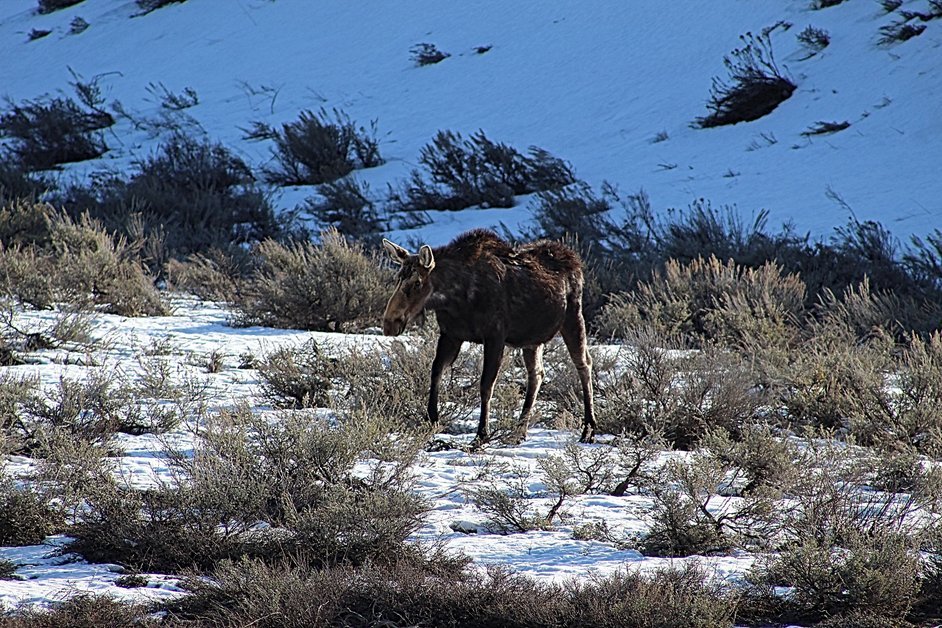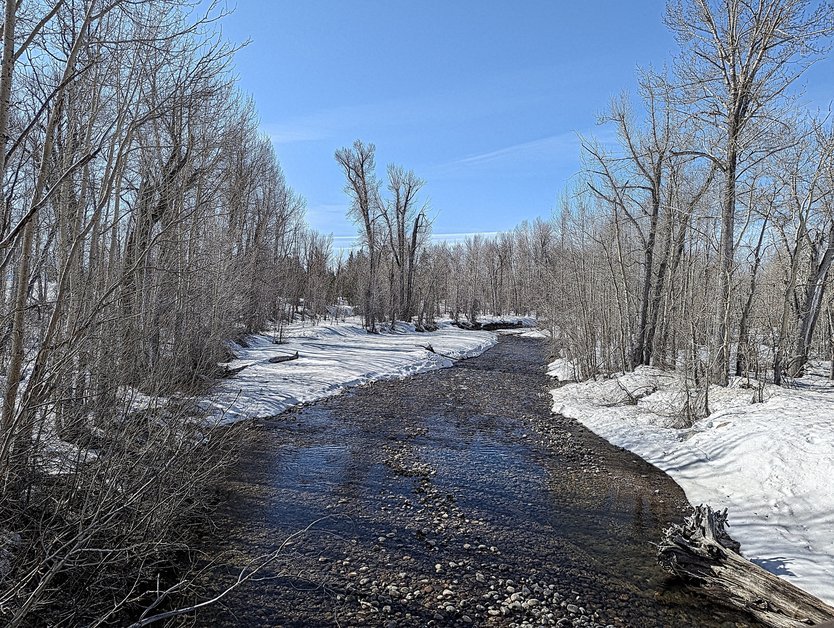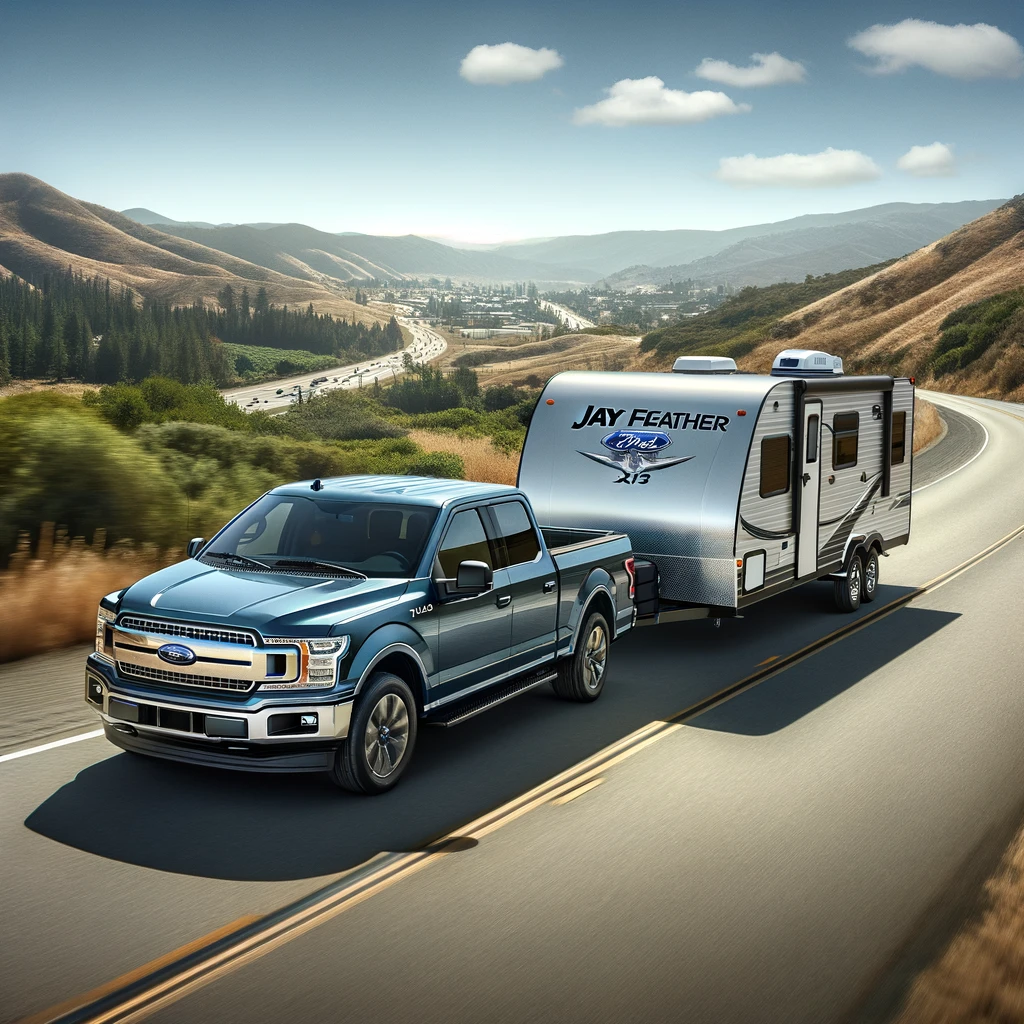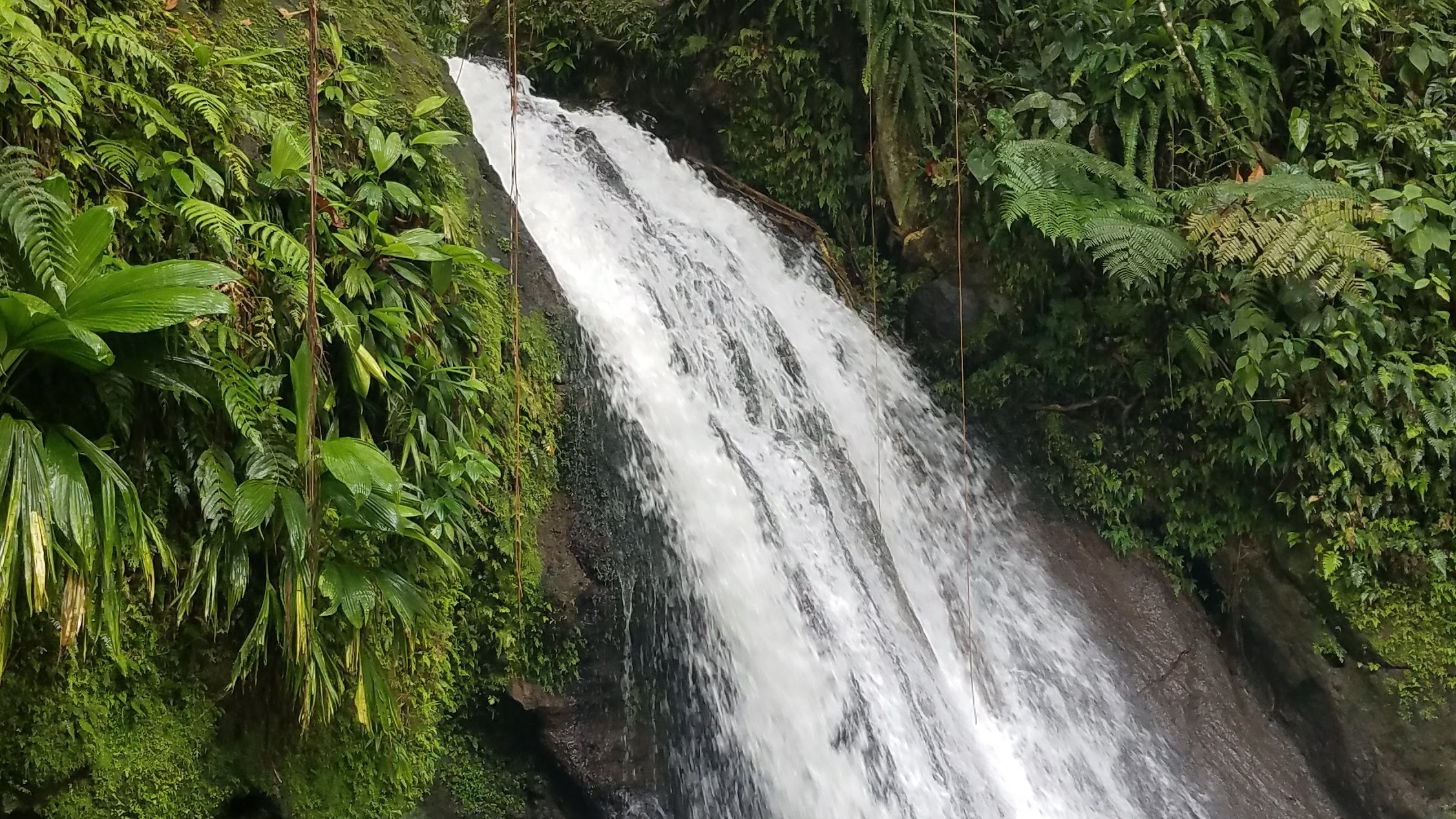Grand Teton National Park draws over three million visitors each year, yet only a small percentage come during the late-winter or early-spring months. This stunning window often sees fewer crowds, captivating contrasts of snow and thaw, and wildlife emerging from winter dens. At Kango Anywhere, we love road-tripping around North America with our beagle, Sniffy, and our toddler in tow. We’ve learned firsthand that Grand Teton National Park in these transitional months can be both peaceful and challenging — but probably not worth the effort if a major detour is needed.
Why Late Winter/Early Spring is Special
- Quick Summary:
- Fewer people and less traffic
- Snow-capped peaks mixed with early greenery
- Unique wildlife sightings
- Great for photographers seeking dramatic landscapes
This time of year brings a calm you won’t experience in peak season. The energy of late winter meets the hope of early spring, offering a kind of dual personality in the park. Mornings can be cold enough to freeze your breath, while afternoons might feel warm in direct sunlight. Mountain peaks remain wrapped in snow, but valley floors could start to show patches of green. Some lakes hold on to their icy covers, while others break into sparkling waters that mirror the towering Tetons.
Because we often travel as digital nomads with our beagle, we’re always looking for flexible schedules and calmer tourist spots. In late winter or early spring, most trailheads aren’t brimming with vehicles. Instead, you’ll find a handful of hikers, a photographer perched on a tripod, or maybe a local out for a quick trek. The serenity makes it easier to spot animals like moose or bison without spooking them. For instance, near the Snake River Overlook, we once saw a herd of elk moving silently across the snow. We kept our distance and used binoculars, which allowed us to observe them responsibly.

Grand Teton National Park Entry Sign
Late winter/spring also simplifies certain aspects of travel. For example, lodging rates in the nearby town of Jackson might be lower than in July. Parking areas that fill quickly in summer may be half-empty in mid-March. This breathing room can be a huge plus if you’re juggling your toddler’s nap schedule or letting your beagle sniff around new terrain.
If you’re curious about how other national parks handle off-season transitions, check out our post on Navigating US National Parks Road Closures in Spring where we share more insights on minimizing travel surprises. Grand Teton’s quiet charm reminds us that nature’s beauty isn’t limited to summer or fall. Sometimes, the best experiences happen when you dare to visit at a time most people overlook.
Road Conditions & Seasonal Closures
- Quick Summary:
- Teton Park Road and Moose-Wilson Road may be partially closed
- Some areas only accessible by foot, snowshoe, or cross-country skis
- Always verify closures on NPS.gov
- Nearby highways remain open year-round but can get icy
Late-winter and early-spring conditions in Grand Teton National Park can vary by the hour. One day might bring a clear sky and safe roads, and the next could drop several inches of wet snow. Teton Park Road typically stays closed from Taggart Lake Trailhead to Signal Mountain during winter. This closure protects wildlife and visitors from unsafe driving conditions and also offers a wide corridor for winter recreation. By mid- to late March, park staff may begin plowing, but the exact dates can shift.

Ford F150 driving on Teton Park Road in early-Spring 2024
Moose-Wilson Road is another scenic stretch that may see partial closures for wildlife protection or heavy snow. If you do find it open, proceed slowly and watch for unexpected icy spots or roaming animals. During our visit, we had to stop the truck because a young moose decided to wander down the middle of the road—an unforgettable moment. We just let our toddler watch in awe and made sure our beagle was calm inside the vehicle.
For more details on navigating tricky park roads, read our post on Rocky Mountain National Park Late Winter & Spring Travel Guide. Conditions in the Rockies often mirror what you might find in Grand Teton, so it’s a handy reference.
In general, US-26/89/191 remains open all year, connecting Jackson with Moran and other northern park areas. Watch out for signs about chain or snow tire requirements if there’s a storm. Even if plowed, roads can refreeze overnight, so morning drives may require extra caution.
A final tip: check the weather daily and follow updates from the National Park Service or local ranger stations. This will help you avoid turning a short drive into an all-day ordeal. Plan your routes for morning or midday when the sun has had time to melt ice, especially if you’re driving an RV or towing a travel trailer. Don’t be afraid to switch plans if conditions worsen. Safety always comes first.
Unique Weather Patterns
- Quick Summary:
- Temperatures range from single digits to the 40s or 50s (Fahrenheit)
- Snow flurries can appear even in late April
- Sunlight changes rapidly, affecting snowmelt
- Dress in layers for quick temperature shifts
Spring weather here can be anything but predictable. In March, we’ve woken up to 15°F (-9°C) and midday highs touching 40°F (4°C). By April, afternoons can climb into the 50s (10°C), but snow can still fall when you least expect it. That means multiple layers are key. We often keep a light hoodie, a windproof shell, and a pair of thermal leggings in the truck just in case.

Sniffy the Beagle walking in Grand Teton National Park
Also consider the role of sunshine. The angle of the sun can melt road ice quickly in open areas but leave shaded zones—especially under trees—slick for days. When we hiked near Taggart Lake one March, the trail began as well-packed snow, but turned into slush by mid-afternoon. Our toddler loved splashing around, but it made for a slippery descent.
One benefit of these weather quirks is the chance to see what I call a “transition scene”: meadows where half is snow-covered and half is sprouting green grass. Photographers relish these contrasts. If you time it right, the golden hour can produce breathtaking images of snow-dusted pines shimmering against sunlit peaks. For advanced planning, we rely on local forecasts and sometimes the NOAA’s point forecast system, which zeroes in on specific areas within the park.
If unpredictable weather sparks your curiosity for more seasonal travel insights, check our story on Exploring Tetons National Park in Spring 2024 for a deeper dive into how we handled sudden snow and road closures. Adapting to shifting conditions can be exciting, as long as you’re prepared.
Winter’s leftover snow may feel like an inconvenience at times, but it also gives you the chance to see Grand Teton in a dramatic new light. If you enjoy capturing the interplay of ice and emerging plant life, consider a longer stay. Just come armed with warm clothes, traction devices, and an open mind.
Wildlife Encounters and Safety Tips
- Quick Summary:
- Moose, elk, bison, and even bears may appear
- Keep 25 yards from most wildlife, 100 yards from predators
- Bring binoculars for safer viewing
- Use telephoto lenses for close-up photos
Seeing wildlife up close is one of the biggest thrills in Grand Teton National Park. In late winter, moose and elk might still graze in lower valleys, scavenging for any remaining foliage. By early spring, some animals migrate to higher ground, yet you can still catch sightings around rivers and meadows. We once spotted a moose off Teton Park Road near the same bend where we’d seen bison just the day before.

Moose grazing in Grand Teton National Park
Bears—both black and grizzly—start stirring from hibernation once it warms up. If you visit around late March or April, you might see fresh bear prints in the snow. Keep bear spray handy, and remember that surprising a bear is the worst way to encounter one. Talk softly or make noise to avoid sneaking up on wildlife. If you have a dog like our beagle, ensure it’s on a leash where allowed, and never let it bark at or chase animals.
For more tips on wild animals in this region, see Discovering the Mammals of Yellowstone National Park: A Wildlife Wonderland which highlights similar species and habits found around the greater Yellowstone ecosystem. When it comes to large predators, keep your distance. The park advises staying at least 100 yards (91 meters) away from bears and wolves, and 25 yards (23 meters) from other wildlife. Violating these rules can lead to fines—and it’s simply dangerous.
As a parent, I keep an extra eye on our toddler, who often gets excited upon seeing any furry creature. A gentle reminder for kids: these are wild animals, not zoo exhibits, so shouting or running toward them can put everyone at risk. Bring a pair of binoculars or a camera with a good zoom lens. That way, you can marvel at a moose’s enormous antlers or a bear’s curious sniffs without intruding on their space.
Activities for Adventurers (and Families)
- Quick Summary:
- Cross-country skiing and snowshoeing
- Early-season hiking in lower elevations
- Wildlife tours with local guides
- Scenic driving on main highways
Outdoor enthusiasts can have a blast in Grand Teton National Park during this transitional season. Cross-country skiing and snowshoeing often top the list of adventures. Before Teton Park Road fully reopens, you can ski along it and enjoy uninterrupted mountain views. Some outfitters in Jackson rent gear by the day or week. This is a prime way to experience the park without dealing with big crowds or summer heat.

Grand Teton National Park hiking trail with beaver dam
Once snow melts below 7,000 feet (2,130 meters), some trails open to hikers. Keep microspikes or traction devices handy for icy patches. Taggart Lake Trail is a popular route that’s often accessible by mid- to late spring. Though parts might still be slippery, it’s manageable if you pick a clear day and go slow. We like to take short breaks for our toddler and beagle, letting them soak in the fresh air while we snap photos.
If you’re more comfortable with a guide, local wildlife tours can increase your chances of spotting elusive creatures like wolves or eagles. A professional guide might have up-to-date knowledge of animal movements, giving you a front-row seat to nature without harming it. For an example of a dog-friendly approach to discovering new parks, see our post on Exploring Yellowstone National Park: A Dog-Friendly Adventure. We talk about respecting local regulations and preparing for abrupt weather changes.
Scenic driving along US-26/89/191 remains an excellent option if you have limited mobility or are pressed for time. The Snake River Overlook, Oxbow Bend, and Mormon Row offer easy pullouts with panoramic views. Even if it’s cold, the combination of frosty hillsides and bright sunshine can be jaw-dropping. Drive cautiously, as patches of black ice can linger in shaded curves.
Whether you’re a first-timer or a seasoned traveler, combining physical activities like hiking or skiing with laid-back drives creates a balanced experience that suits varied energy levels. Especially for families juggling a baby or toddler, mixing short bursts of outdoor fun with scenic car rides can keep everyone happy.
Tips for Responsible Travel with a Beagle
- Quick Summary:
- Leash rules protect wildlife and your pet
- Pack warm gear for your dog
- Be aware of dog-restricted trails
- Consider off-peak hours for walks
As a traveling family, we’ve learned a few lessons about bringing our beagle, Sniffy, into nature. Grand Teton National Park enforces strict leash rules to protect wildlife and keep dogs safe. This means Sniffy must stay leashed, generally on paved areas or in designated campgrounds. Dogs can’t roam freely on park trails, in the backcountry, or in buildings. While that’s limiting, we find ways to balance our dog’s exercise with park regulations. With the road being closed, we were able to walk along the road with our dog!

Sniffy the Beagle walking in Grand Teton National Park
If you’re curious about how canine policies differ from park to park, read our take on Why Does the US National Park Service Hate My Dog and Drone?. We discuss the rationale behind these rules and how we adapt to them. In Grand Teton, it’s crucial because moose and bears can be unpredictable. A curious beagle might provoke a defensive response, putting everyone at risk.
In colder months, watch the temperature and consider dog boots if the ground is icy or heavily salted. Paw injuries can occur if the surface is too cold or treated with chemicals. We also pack a lightweight dog jacket for mornings that dip below freezing. If your dog shows signs of shivering or exhaustion, take a break.
Finding dog-friendly patches usually means sticking to scenic pullouts, campgrounds, or even some back roads near park entrances. We often plan a quick walk or “sniff break” at each pullout to keep Sniffy active. For longer hikes, Matty and I may take turns staying with our toddler and dog near the truck while the other hikes a short trail.
Try off-peak times. In late winter or early spring, that might be early morning or twilight. Fewer cars are around, so it’s more relaxed. Just keep an eye out for wildlife, especially around dawn or dusk. Carry waste bags to avoid any negative impact on this fragile environment. Responsible dog ownership helps preserve the park for future visits, including your next trip with four-legged family members.
Staying in or Near Grand Teton
- Quick Summary:
- Limited lodging in the park during off-season
- Jackson offers year-round hotels, motels, and rental cabins
- Check open campgrounds if you prefer outdoor stays
- Local shops cater to winter and spring gear needs
During peak summer, you can stay right in Grand Teton National Park at places like Colter Bay Cabins or Jenny Lake Lodge. But in late winter or early spring, many in-park facilities remain closed. Your best bet is Jackson (often called Jackson Hole), a friendly town where you’ll find everything from budget motels to high-end resorts. Because it’s a bustling ski area, Jackson typically has decent availability in early spring, though weekends can still book up fast if powder-lovers show up for a final run.

Ford F150 XLT in snowy Grand Teton National Park
If you’re a fan of RV living or are pursuing a FIRE lifestyle like we do, consider looking outside the park for year-round campgrounds. Some have electric hook-ups, heated restrooms, or laundry facilities—handy if you’re traveling with kids and dogs. You might even find lower nightly rates than you would in high season. Just confirm the roads to that campground are passable in late winter conditions.
We often do grocery runs in Jackson. You’ll find well-stocked stores where you can get everything from quick snacks to fresh produce for home-cooked meals in an Airbnb or camper. If you need last-minute gear—like microspikes, snow boots, or a warm coat—local outdoor shops can help, though prices may be higher than ordering online. For an overview of how we juggle our lodging and day trips in different parks, browse our post on A Week Exploring the “Big 5” National Parks in Utah. Even though that focuses on Utah, the general strategy of mixing campgrounds with occasional hotel stays applies here, too.
When in Jackson, we like to sample local restaurants if we’re not cooking in our RV. Just keep in mind that some eateries have limited off-season hours or might close for a few weeks in spring. Planning a flexible itinerary is wise. If you’re traveling with a toddler, ask about kid-friendly menus or open spaces where little ones can move around. We prefer restaurants with quick service, so our toddler doesn’t get restless.
Linking to Yellowstone: Double the Fun
- Quick Summary:
- Southern gateway to Yellowstone remains closed in winter
- Reopens in late April or early May, weather permitting
- North Entrance stays open year-round
- Combining both parks offers a big wildlife and scenic bonus
A major perk of visiting Grand Teton National Park is its proximity to Yellowstone. They sit side by side, separated only by the John D. Rockefeller Jr. Memorial Parkway. In winter, though, the South Entrance to Yellowstone is typically closed to standard vehicles. Unfortunately, this was our experience in 2024. Snowmobiles or guided snowcoach tours may still run, but when spring approaches, the park closes fully for a while to switch from snow to paved road mode. By late April or early May, the South Entrance often reopens to cars, although exact dates depend on weather. We were able to drive just past the Jenny lake viewpoint and there was an open store at Colter Bay Village.

Frozen Jackson Lake in Grand Teton National Park
This the long detour that we had to do with the Rockefeller parkway state route 191 pass closed.

If that’s on your bucket list, keep tabs on official opening dates through the National Park Service website. Late-season snow can still cause delays, so flexibility is crucial.
Looking for details on must-see spots in Yellowstone? Peek at our post on Exploring Mammoth Hot Springs at Yellowstone National Park to get a head start on planning. If you have extra time and stable weather, traveling between both parks means doubling your chances of spotting iconic animals, from grazing bison to elusive wolves. The entire region is part of the greater Yellowstone ecosystem, so habitats overlap. You might see a moose in Grand Teton one day and a grizzly in Yellowstone the next. Although, we did see Black Bears at Yellowstone and Glacier National Parks, we had to wait until Jasper National Park to see grizzly bears (one walked under our camper trailer!)!
Driving from Jackson to Yellowstone’s West Entrance is another option if the southern road remains closed. It’s a longer route, but the changing landscapes keep it interesting. That approach can also lead you through Idaho or Montana, giving you a broader sampling of Western scenery. However you slice it, combining these parks is an epic journey—minus any marketing fluff, we promise. Just know that this side-by-side excursion can be easier in late spring than in mid-winter, especially if you have a toddler and a beagle along for the ride.
FAQ
1. Is late winter/early spring a good time to see wildlife in Grand Teton National Park?
Yes. Many animals roam lower elevations, and bears start emerging from dens. You’re likely to spot moose, elk, or bison. Just maintain a respectful distance.
2. Do I need special gear for hiking in March or April?
Traction devices like microspikes are helpful for icy trails. Layered clothing is also essential since temperatures can fluctuate quickly during the day.
3. Can I bring my dog on the trails?
Dogs are generally not allowed on park trails or in the backcountry. They must be leashed and stay near roads, campgrounds, or picnic areas. Check official guidelines before heading out.
4. When does the road to Yellowstone open from Grand Teton?
It usually reopens in late April or early May for cars. Before that, you can use over-snow vehicles, or you might need to drive around to a different entrance.
5. Where should I stay if the park lodges are closed?
Jackson offers year-round lodging, and some off-peak deals can be found. RV travelers might locate open campgrounds in nearby towns if park facilities are unavailable.
6. Are there guided tours for wildlife watching in early spring?
Yes. Local outfitters offer tours for spotting wolves, moose, and more. They also provide insights on safety and ecology, which can enhance your overall experience.
7. Is the Junior Ranger badge available when the visitor center is closed??
Yes. We collected the Junior Ranger program workbook at the entry booth, and then collected the Junior Ranger badge from a ranger at the Beaver Head trailhead from 10am.

Grand Teton National Park landscape
Late winter and early spring in Grand Teton National Park offer a different pace that mixes serene mountain beauty with the excitement of nature’s reawakening. Fewer crowds, dramatic contrasts of snow and sun, and the chance to pair your visit with Yellowstone all make this a standout time to come. Just remember to keep safety in mind, dress warmly, and respect local wildlife and dog rules. Whether you’re chasing photo ops, family-friendly adventures, or that sweet sense of solitude, the Tetons in the off-season have a lot to give. Enjoy the journey and keep exploring with Kango Anywhere—where traveling with a beagle, a toddler, and a thirst for freedom is all part of the adventure!
Discover more from Kango Anywhere
Subscribe to get the latest posts sent to your email.




